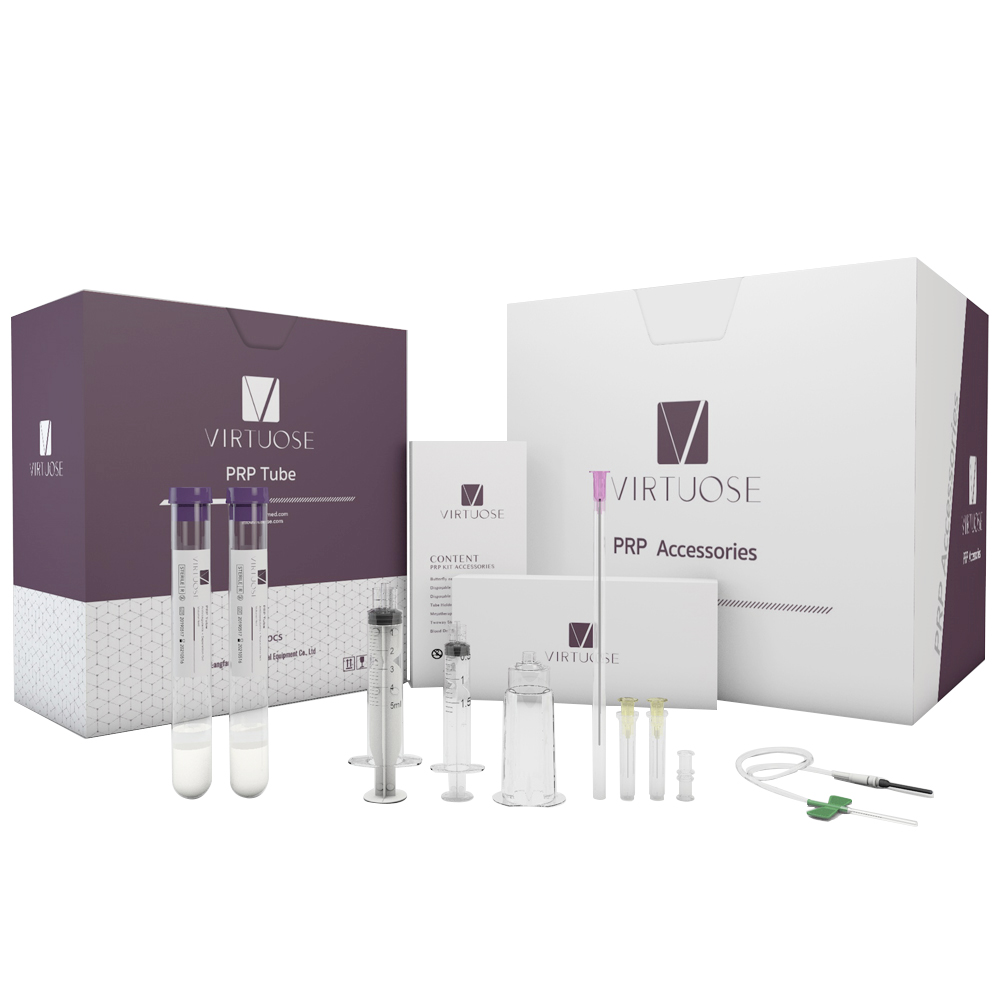What is PRP Treatment?
Platelet-Rich Plasma (PRP) therapy is a cutting-edge regenerative treatment that harnesses the body’s natural healing mechanisms. By isolating and concentrating platelets from a patient’s own blood, PRP delivers a potent dose of growth factors (e.g., PDGF, VEGF, TGF-β) directly to injured or aging tissues, accelerating repair and reducing inflammation. Unlike synthetic drugs or invasive surgeries, PRP leverages autologous biological materials, minimizing rejection risks and side effects.
How Does PRP Work?
Blood Extraction: 10–60 mL of blood is drawn from the patient.
Centrifugation: Specialized PRP tubes separate platelets from red/white blood cells, achieving 3–8x higher platelet concentrations.
Injection: The concentrated plasma is injected into target areas (e.g., joints, skin, tendons) under ultrasound guidance for precision.
The growth factors in platelets stimulate cell proliferation, collagen synthesis, and angiogenesis, making PRP effective for both acute injuries and chronic conditions.
Key Applications of PRP Treatment
Orthopedics & Sports Medicine
Tendon Injuries: Tennis elbow, rotator cuff tears, Achilles tendinitis.
Osteoarthritis: Knee, hip, and shoulder joint degeneration. A 2025 meta-analysis confirmed PRP’s clinically significant pain relief and functional improvement, especially with high platelet concentrations (>1 million/µL).
Post-Surgical Recovery: Enhances healing after ACL repairs or tendon surgeries.
Aesthetic & Dermatology
Facial Rejuvenation: The “vampire facial” combines PRP with microneedling to boost collagen and reduce wrinkles.
Hair Restoration: Stimulates dormant follicles in androgenetic alopecia.
Scar & Wound Healing: Accelerates recovery in diabetic ulcers and post-surgical wounds.
Chronic Pain Management
Addresses plantar fasciitis, lower back pain, and degenerative disc disease.
Why Choose PRP? 5 Evidence-Backed Benefits
Minimally Invasive: No surgery or synthetic additives required.
Safety: Low infection risk (autologous material) and no long-term complications.
Durability: Effects last 6–12 months for osteoarthritis and up to 18 months for cosmetic applications.
Versatility: Adaptable to musculoskeletal, dermatological, and dental needs.
Cost-Effective: Avoids expensive surgeries and prolonged rehabilitation.
Who Should Avoid PRP? Key Contraindications
Blood Disorders: Thrombocytopenia, clotting dysfunction.
Active Infections: Sepsis or localized infections at injection sites.
Chronic Illnesses: Uncontrolled diabetes, autoimmune diseases (e.g., lupus).
Pregnancy/Lactation: Limited safety data.
Medication Conflicts: NSAIDs or anticoagulants (e.g., aspirin) must be paused pre-treatment.
The PRP Treatment Journey: What to Expect
Frequency: Typically 2–3 sessions spaced 3–4 weeks apart.
Recovery: Mild swelling or soreness for 3–7 days; ice and acetaminophen are recommended.
Results: Visible improvements in 4–6 weeks, with peak effects at 3 months.
Latest Advances in PRP Research
High-Platelet PRP: Studies show concentrations >1 million/µL significantly outperform lower-dose preparations in pain relief and functional recovery.
Combination Therapies: PRP paired with stem cells or hyaluronic acid enhances cartilage regeneration.
Surgical Integration: Used alongside procedures like blepharoptosis correction to reduce complications and improve outcomes.
Conclusion: Is PRP Right for You?
PRP treatment represents a paradigm shift in regenerative medicine, offering hope for patients seeking alternatives to surgery or steroids. While its efficacy is well-documented in orthopedics and aesthetics, individual results depend on factors like platelet quality, injection precision, and adherence to post-treatment protocols.
Pro Tip: Always consult a licensed specialist to assess eligibility and customize your PRP plan. For deeper insights, explore clinical case studies or connect us.
Post time: May-09-2025


